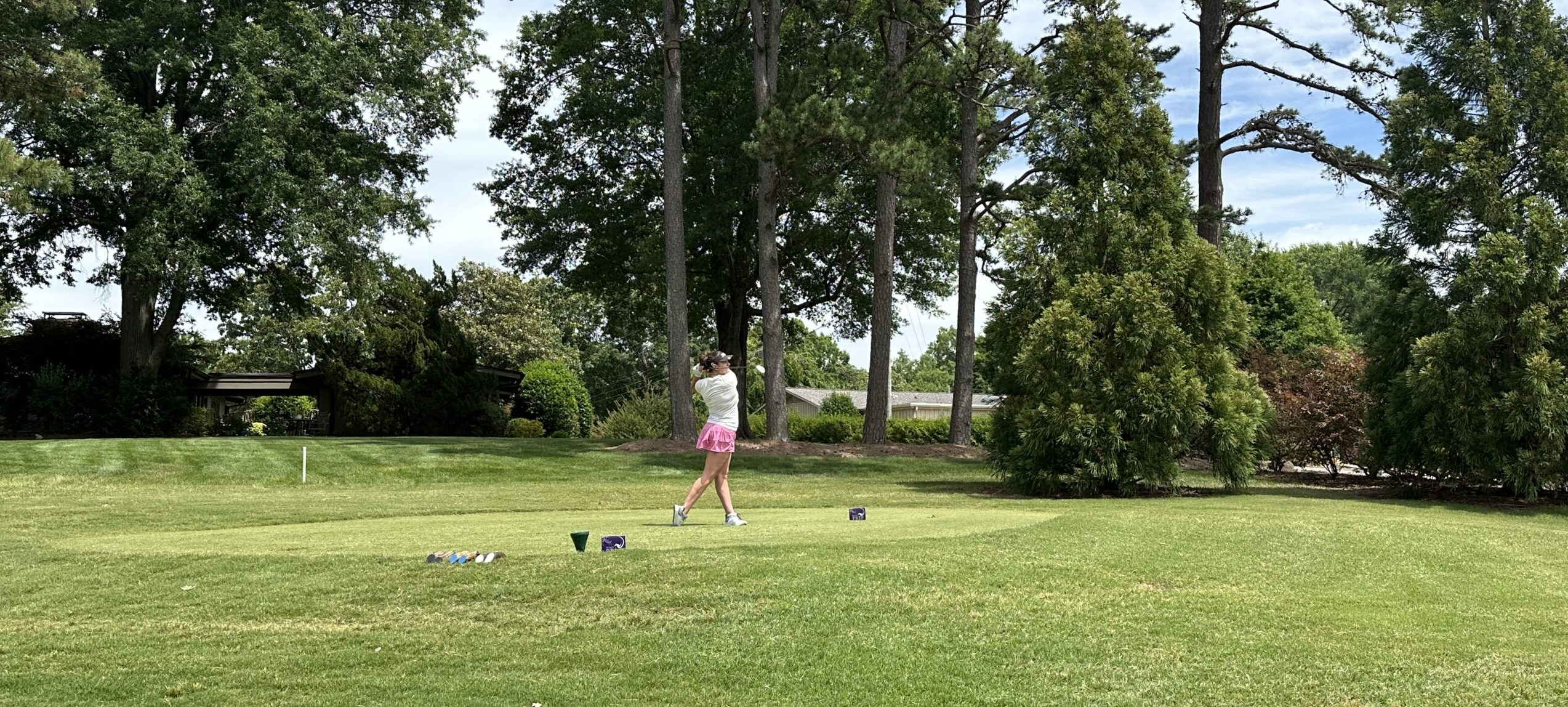“Why She Can’t Shoot 72 in Tournaments (Even If She Did in Practice)”
I wrote an article about this topic a few years ago, but it’s one that continues to come up — and for good reason.
You’ve probably heard it (or said it yourself):
“She shot 72 in her practice round… why can’t she do that in tournaments?”
As a long-time competitive player and coach, I want to respond with, “It’s just not the same thing.”
But I know that answer alone doesn’t help anyone understand why it’s different — so let’s take a closer look at what truly separates practice rounds (and on-course practice) from tournament play.
The Consequences Are Real
Even when a player takes her practice rounds seriously — counts every stroke, plays with focus, and stays disciplined — there’s still one key element missing: real consequences.
In practice, no one’s asking you to sign a scorecard. There’s no live leaderboard. You don’t have coaches, friends, or family following along online. You might want to play well, but that’s a very different mindset than when you need or expect to perform well.
That difference — between wanting and needing — completely changes how your body and mind respond once the round begins.
Tournament Day Feels Different
From the moment you wake up on tournament morning, the energy shifts.
The pressure builds before you even reach the course. The environment feels more serious — the staff, the players, the parents — everyone carries a bit more focus. Even the most laid-back players can sense the difference in the air.
Then comes the first tee:
You get and exchange your scorecard, meet your group, identify your golf balls, listen to the rules briefing, and hear your name announced. Suddenly, you’re no longer in a quiet, low-stakes practice round. Every shot now counts.
You start thinking:
“What if I miss this fairway?”
“What if I three-putt again?”
“What if I actually make this birdie and go under par?”
You might notice your parents react, or your competitors play well, or realize you’re on track for a personal best. Every one of those moments adds emotional weight — excitement, nerves, fear, and hope — that simply don’t exist in practice.
And yet, you’re still expected to swing a club at 90+ mph, square it up to a 1.68-inch ball, and make precise contact — all while your mind is likely still spinning.
Practice Rounds Have a Different Purpose
Practice rounds aren’t meant to replicate tournament pressure. They’re designed to help you learn the course — the greens, the slopes, the conditions, the strategy.
When I played competitively, I rarely kept score in practice rounds. Instead, I spent time reading putts from multiple angles, testing shots from different lies, and visualizing where pins might be for upcoming rounds. That’s what practice rounds are for: gathering information, not proving performance.
How to Bridge the Gap
While you can’t fully recreate tournament pressure, you can practice in ways that bring you closer to it.
Here are a few ideas:
- Schedule matches with players as good or better than you — and make them count for something.
- Use pressure-based drills with specific goals, consequences, or rewards to simulate competitive focus.
- Add accountability — track stats, create targets, or play with others who will push you to stay sharp.
- Practice decision-making — not just technique — by creating game-like situations on the course.
The key is to make your practice more purposeful, competitive, and performance-driven, so that when the real tournament arrives, it doesn’t feel quite so foreign.
Final Thought
So, the next time you hear someone ask, “Why can’t she shoot 72 in tournaments if she did in practice?” — remember this:
Practice and tournament golf live in two completely different worlds. One is about learning, the other about performing.
Understanding that difference — and training accordingly — is what turns talented players into true competitors.

